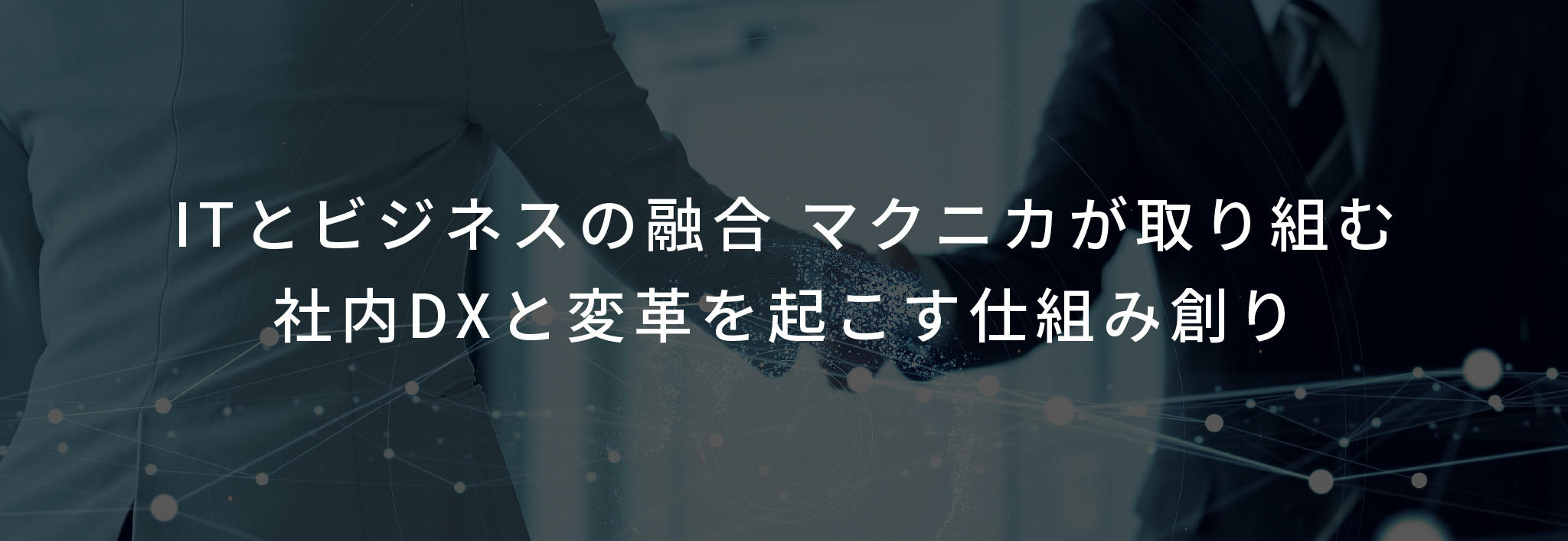
In today's fast-changing digital society, there is a strong demand to innovate your own business operations and maximize the value you provide to customers. The foundation for this is in-house DX, which utilizes digital technology to improve business efficiency and productivity.
This time, Keigo Ando, General Manager of the IT Division, spoke about the "DX Factory," which holds the key to Macnica 's internal DX, as well as the specific measures being implemented and examples of initiatives.
Macnica 's In-house DX and the Origins of the DX Factory
It's been a while since the phrase "from things to experiences" started being used, and I think the question for your company and Macnica is "how to create new services and solutions by making full use of digital technology." The information systems department (hereafter referred to as "IS") to which I belong thinks it is extremely important to work with members of the business department to quickly materialize our ideas and advance DX for the entire group.
On the other hand, it is often the case that business departments do not know who to consult with about their ideas and are unable to make changes, and IT departments may also lack the knowledge to determine what they should do. In such circumstances, it is difficult to promote DX with a sense of unity, and although each department is making various efforts, their efforts tend to be fragmented and inefficient.
To overcome this situation, Macnica 's DX Promotion Department and IT Department have joined forces to launch the "DX Factory." When developing new services and solutions using digital technology, the business department wants to quickly create something, conduct MVP verification, and release it. Until now, the IT department has not been able to provide sufficient support, but going forward, they will actively participate and contribute by utilizing their knowledge.
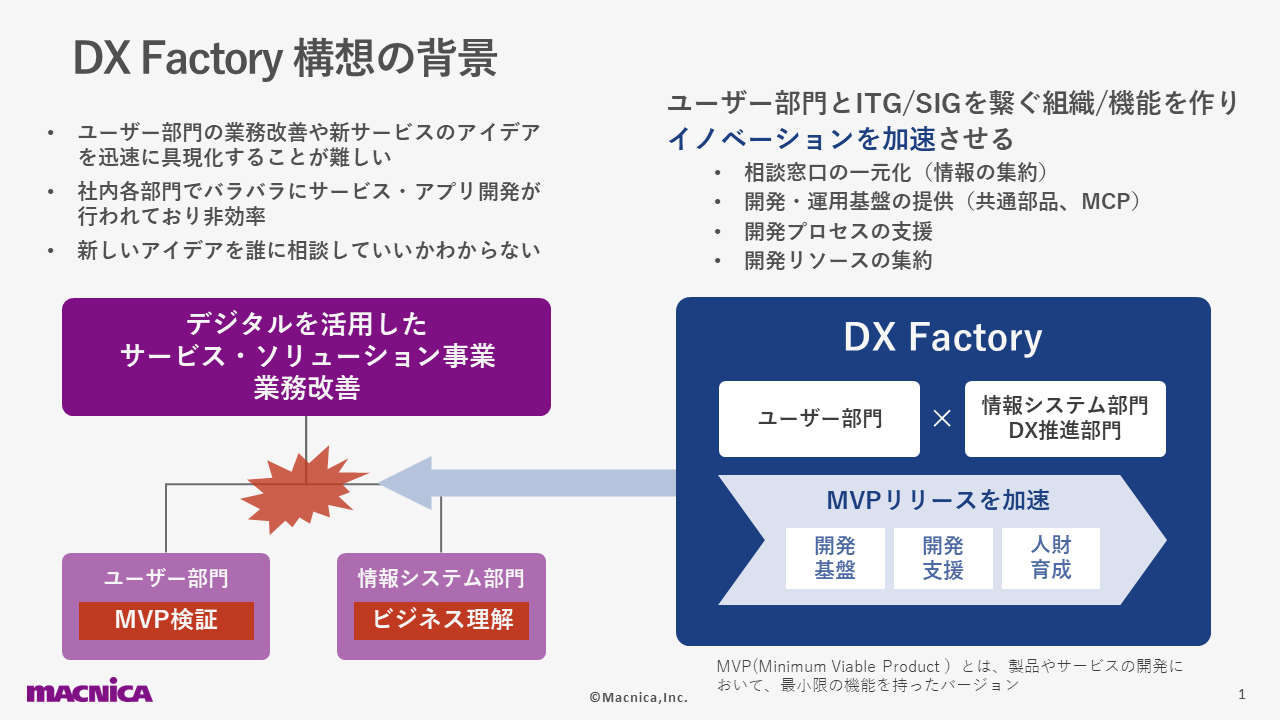
The diagram below is an image of the DX Factory. There are various categories in the business department, such as semiconductors and networks and security, but all of them come up with new ideas and plans every day. The role of the DX Factory is to bring in these ideas, regardless of their size, and provide the support functions necessary to materialize each idea, such as "product owner support" and "development process support." In addition, this series of steps will ideally enable the business department to speed up the cycle of manufacturing and release, which will ultimately enable them to beat other companies.
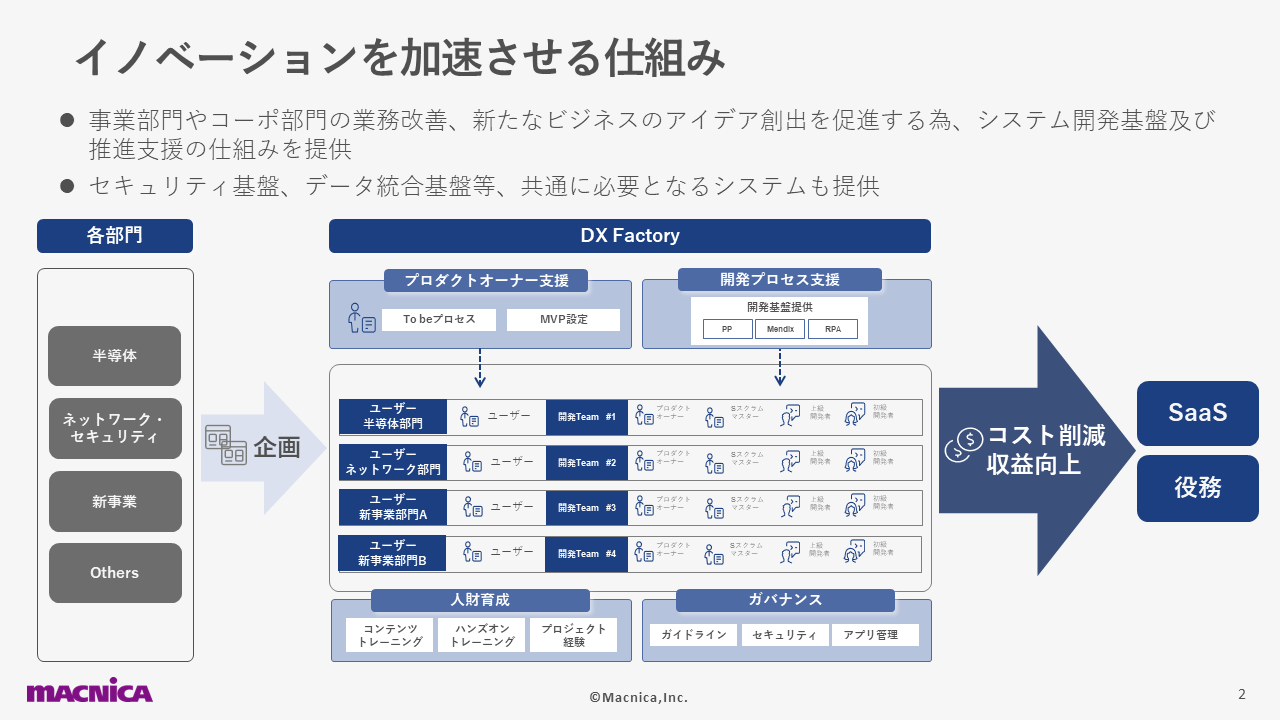
About two years ago, I participated in an in-house DX promotion project as a member of the IT department. Representatives from each department were gathered there, and each person brought up various issues and worked on the project, but it was just a "project." In other words, it had an end. However, DX is not a one-time thing, and the key is how to continue it, and to do that, some kind of mechanism or system is necessary. Macnica wants to position the DX Factory as a "mechanism for constantly producing applications that lead to profits."
Four Measures for DX Factory
From here, we will talk more specifically about the measures and functions that the DX Factory provides. The DX Center has a "Digital Service Development Environment," a development platform that provides the four elements shown in the diagram below to internal users. This environment also primarily makes use of Siemens' software "Mendix," which allows for the rapid creation of applications using low code.
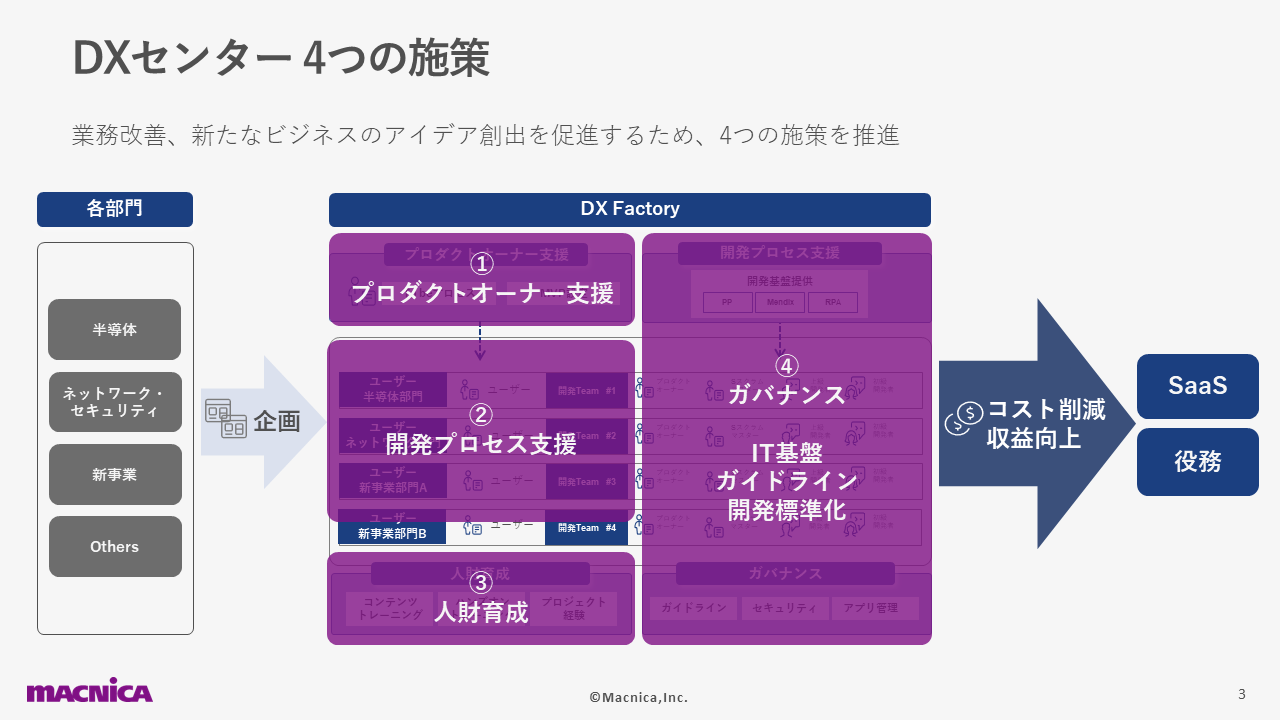
① Product owner support
Today's development of digital solutions and products is basically carried out in an agile manner. In this process, the product owner plays a very important role, as he or she is the central figure in thinking about what the market and users want, what to create, and what the process should be.
It is desirable for this position to be filled by someone who creates the product. In other words, at Macnica, it would not be a member of the IT department, but rather a member who brings in the idea from the business department. However, even if you ask that person to "become a product owner starting today," they will not be able to do the job right away due to lack of experience, so the DX Factory will initially provide support and training. This is "Product Owner Support" in ①. The support also includes creating a To Be process and defining requirements for creating an MVP.
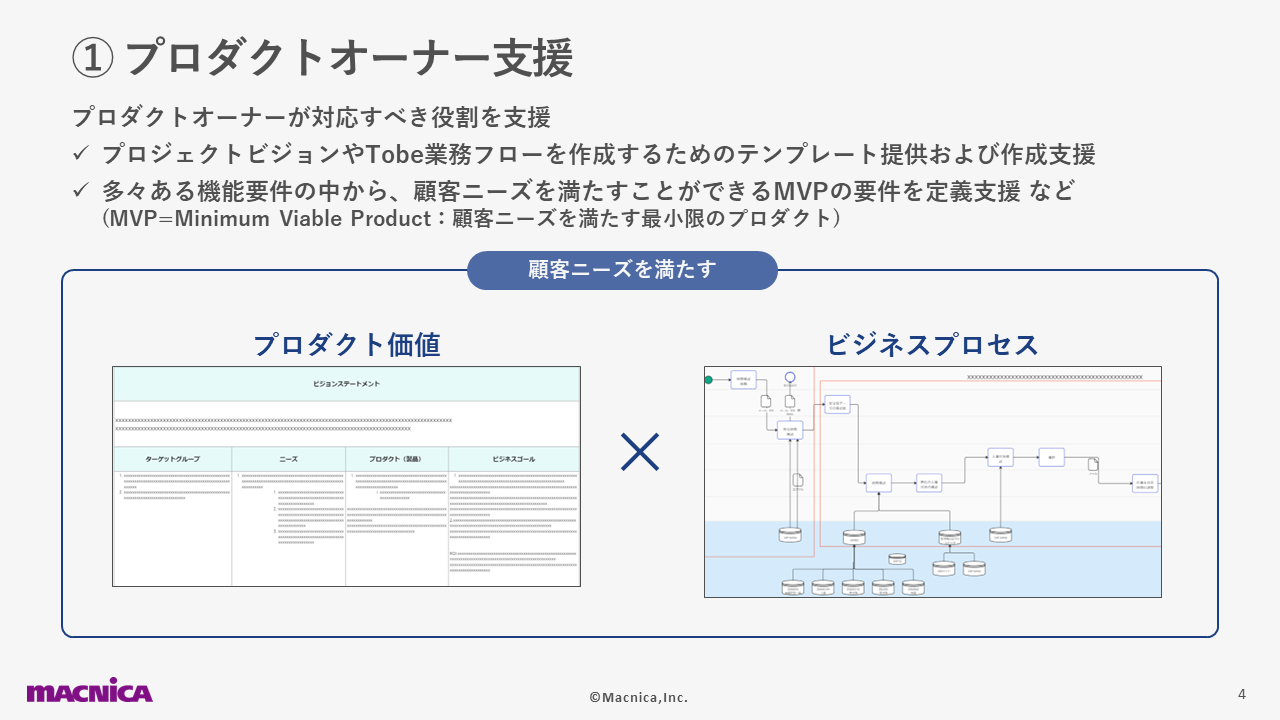
② Development process support
In agile development, the user's business division runs application development in a scrum format. Stakeholders include scrum masters, local developers, and product owners, but business divisions usually do not have any of these. Therefore, product owners and members who can materialize their thoughts and opinions are selected from the business division, and the DX Factory supports them. This process is made possible by ② "development process support."
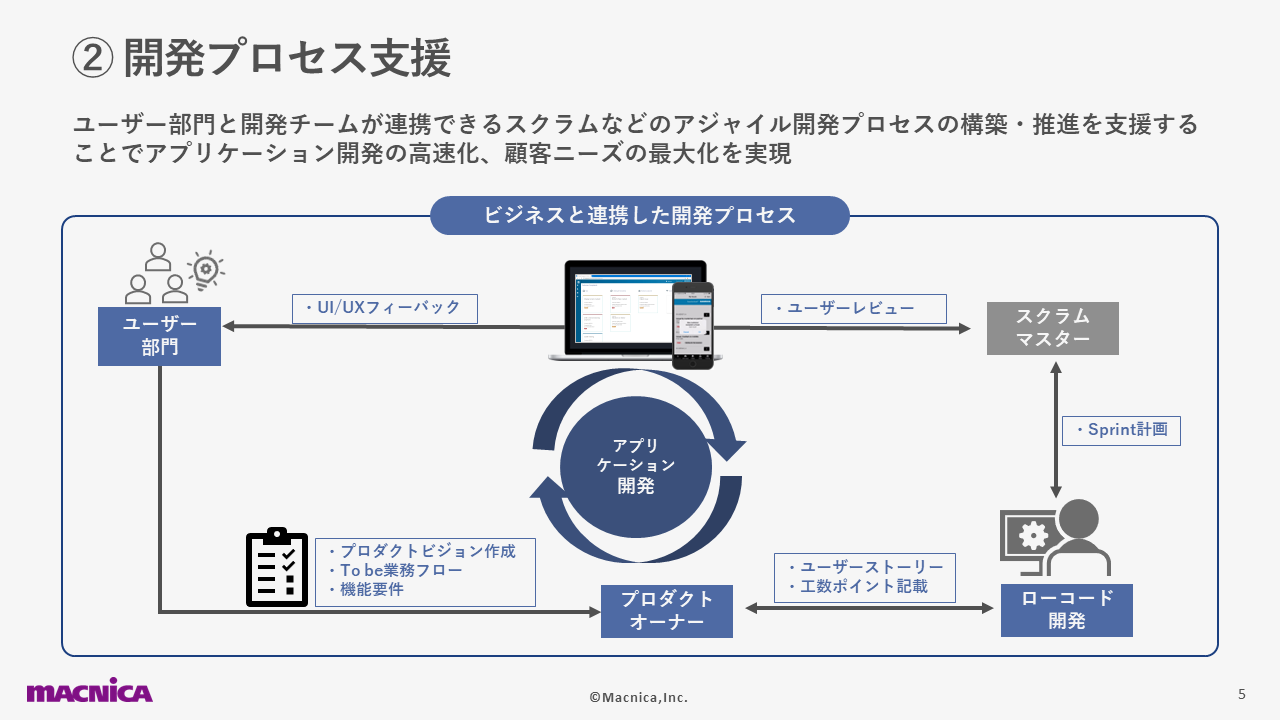
③Human Resource Development
Macnica had almost no people with experience in developing agile digital products. However, unless the number of people who can do so increases in the business divisions, company-wide DX will not accelerate. Therefore, through ③ "human resource development," the DX Factory is taking the lead in developing members who have knowledge of both business and digital product development.
Specifically, we provide hands-on training, self-study content, videos, etc., and through on-the-job training, we hope to ultimately secure many talents who can serve as product owners in the business divisions.
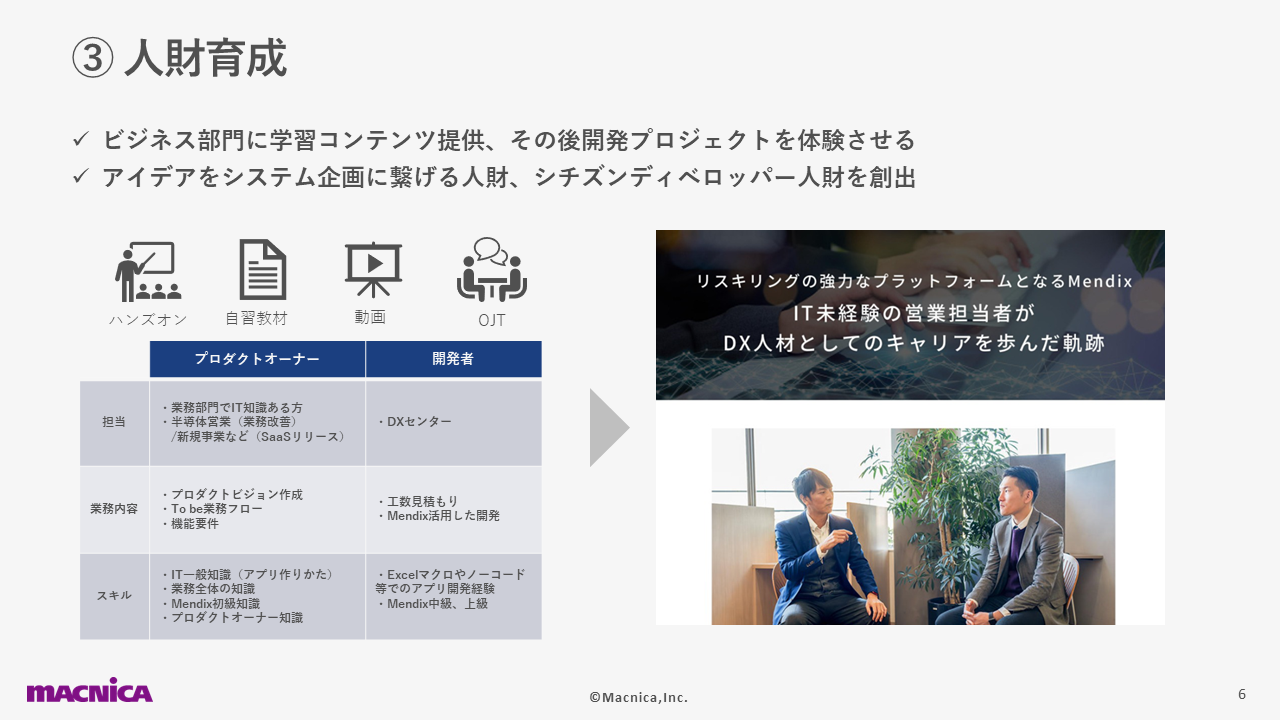
④Governance
The last point is "④ Governance." In manufacturing, it is easy to focus on the things being made and forget about governance, so it is important to be careful. It is inefficient when various departments proceed with development as they please, and security, which is actually very important, is neglected. In fact, there are many cases where the user interface and functions are excellent but there are problems with security. That is why DX Factory provides functions to clarify the areas where governance should be applied.
For example, as shown in the bottom of the diagram, "Reusable apps," if there are things that can be reused, they should be used to the fullest extent possible, and the development infrastructure and applications to achieve this should be prepared in advance. As a result, development can be carried out quickly, and the products that are created can be released to the market sooner.
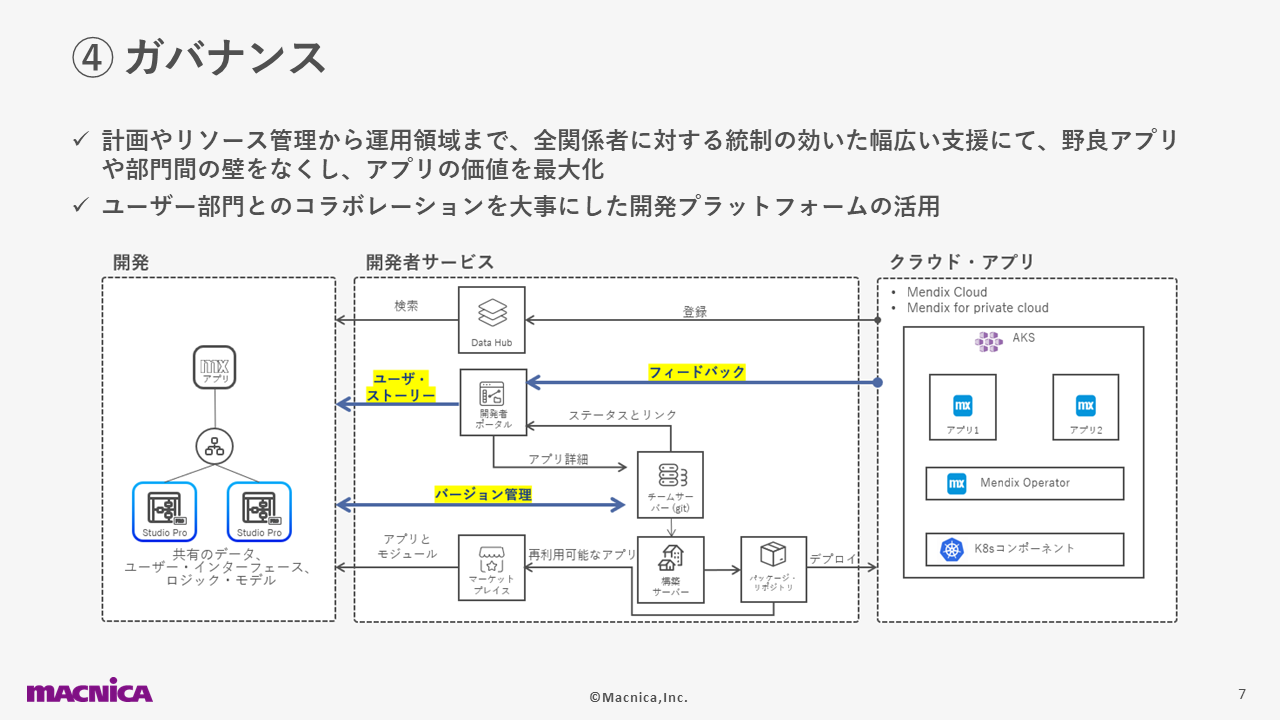
In the past, the KPIs for IT development were said to be "Q (Quality)," "C (Cost)," and "D (Delivery)," and Japanese companies placed an overwhelming emphasis on quality. However, there were also cases of cost overruns and delivery delays. It is true that in the past, development was centered on the waterfall method, so there may not have been a big problem if the priorities were "Q > C > D." However, in today's rapidly changing world, the most important thing to beat other companies is speed, or "D." In other words, it's about how quickly you can complete something and release it to the market.
Of course, it is desirable to guarantee quality and costs as much as possible, but when developing digital products, I think it's important to have the mindset of "bring it to market even if it's only 70 to 80 percent complete."
Examples of in-house digital transformation
Next, we will introduce some examples of DX within Macnica. We use the DX Factory and digital service development platform to provide three functions necessary for MVP development that meet the minimum requirements. Specifically, these are "IT infrastructure," "development process," and "human resource development." This time, we will use the semiconductor business, generative AI utilization platform, and wasabi factory as examples.
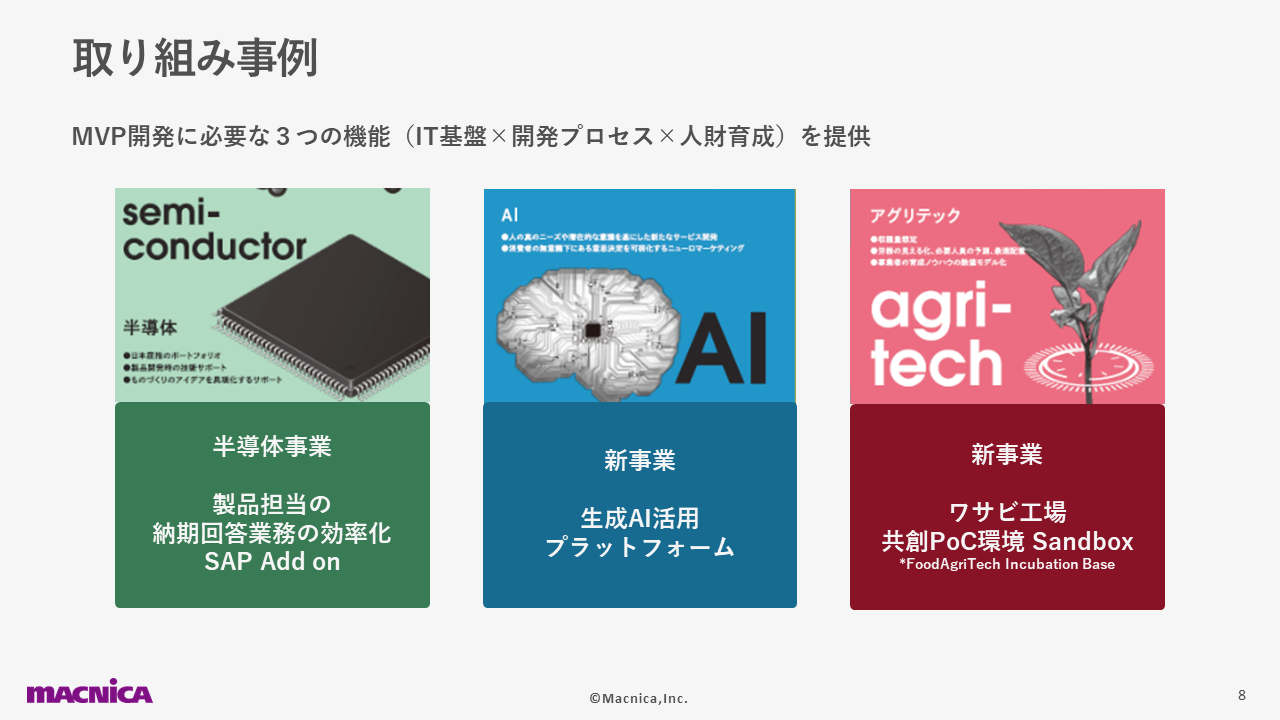
Semiconductor Business
Sales representatives in the semiconductor business generally require prompt delivery date responses. However, the task of checking this information was done manually via SAP, which took a lot of time. So we used Mendix to build a system that extracts data directly from SAP and creates delivery date response reports. As a result, a task that previously took 15 minutes can now be completed in one click and five seconds. Developing an interface from scratch would require a fair amount of man-hours, but by using Mendix in this case, the development period was extremely short.
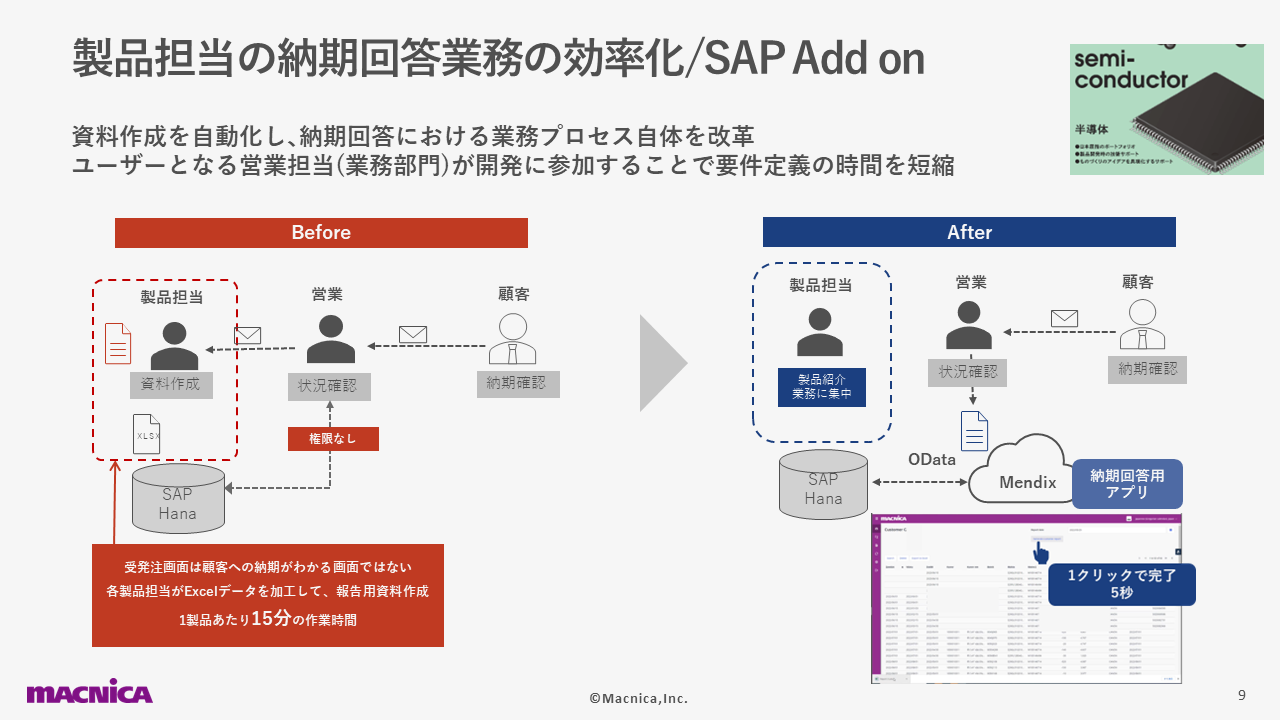
Generative AI Platform
Macnica has been focusing on developing new Services & Solutions that utilize generative AI since 2023. Introducing here is a generative AI application development platform environment that enables data integration and can be used by customers and in-house users.
The diagram includes items such as "Data security settings and data integration settings for each user," "Integration of each company's generated AI solutions and in-house developed AI programs," and "UI development and incorporation into workflows tailored to business needs." We are using all of these as an application platform using Mendix to advance development.
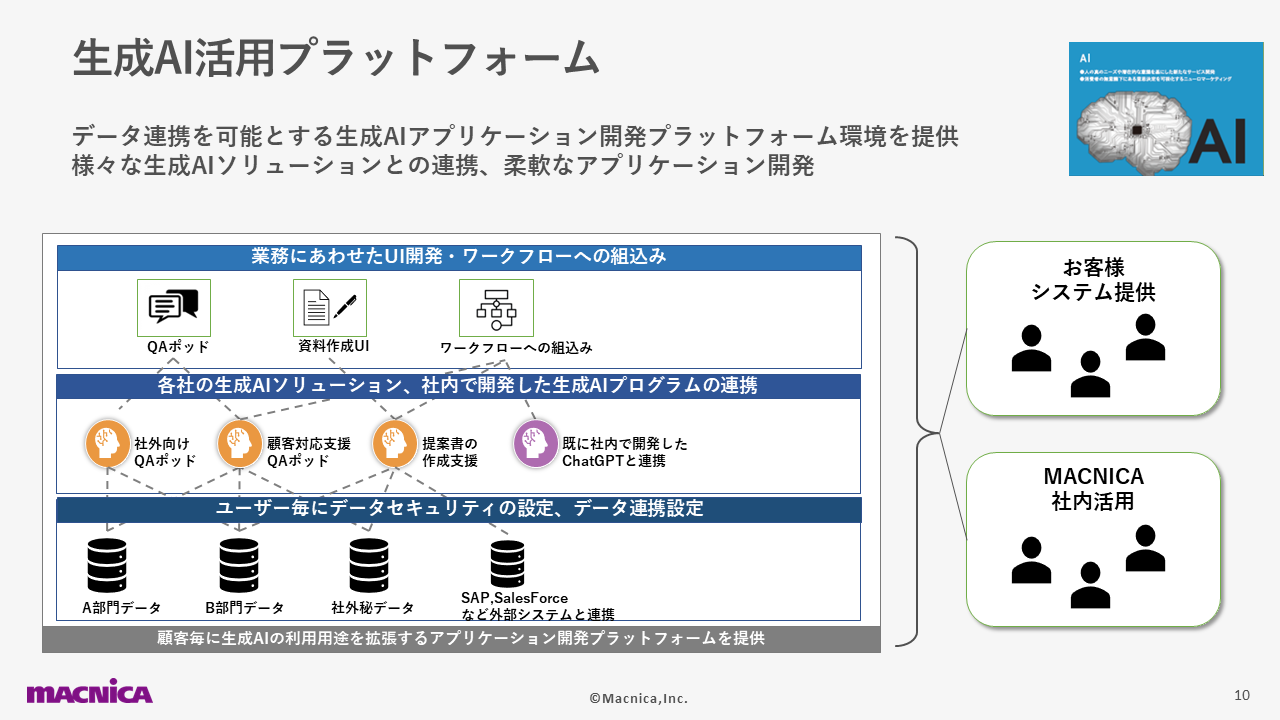
Sandbox where you can conduct co-creation PoC with partners
The last example is a wasabi factory. The photo shows the inside of a large container, where Macnica has brought together the best of its technology to create an environment for growing plants in collaboration with customers.
Wasabi is a delicate plant and is said to be very difficult to grow. Therefore, we installed various technologies in the container, such as a monitoring system using cameras and AI, LEDs that can emit wavelengths suitable for wasabi growth, and air quality sensors. We also used Mendix to build a system to manage these technologies.
Macnica will continue to accelerate digital transformation, focusing on the initiatives introduced here.

Related Links
Mendix, a powerful platform for reskilling / The journey of a sales representative with no IT experience who embarked on a career as a DX talent
This column chronicles the journey of a sales representative with a liberal arts background as he took on a new initiative through collaboration with the systems department.


